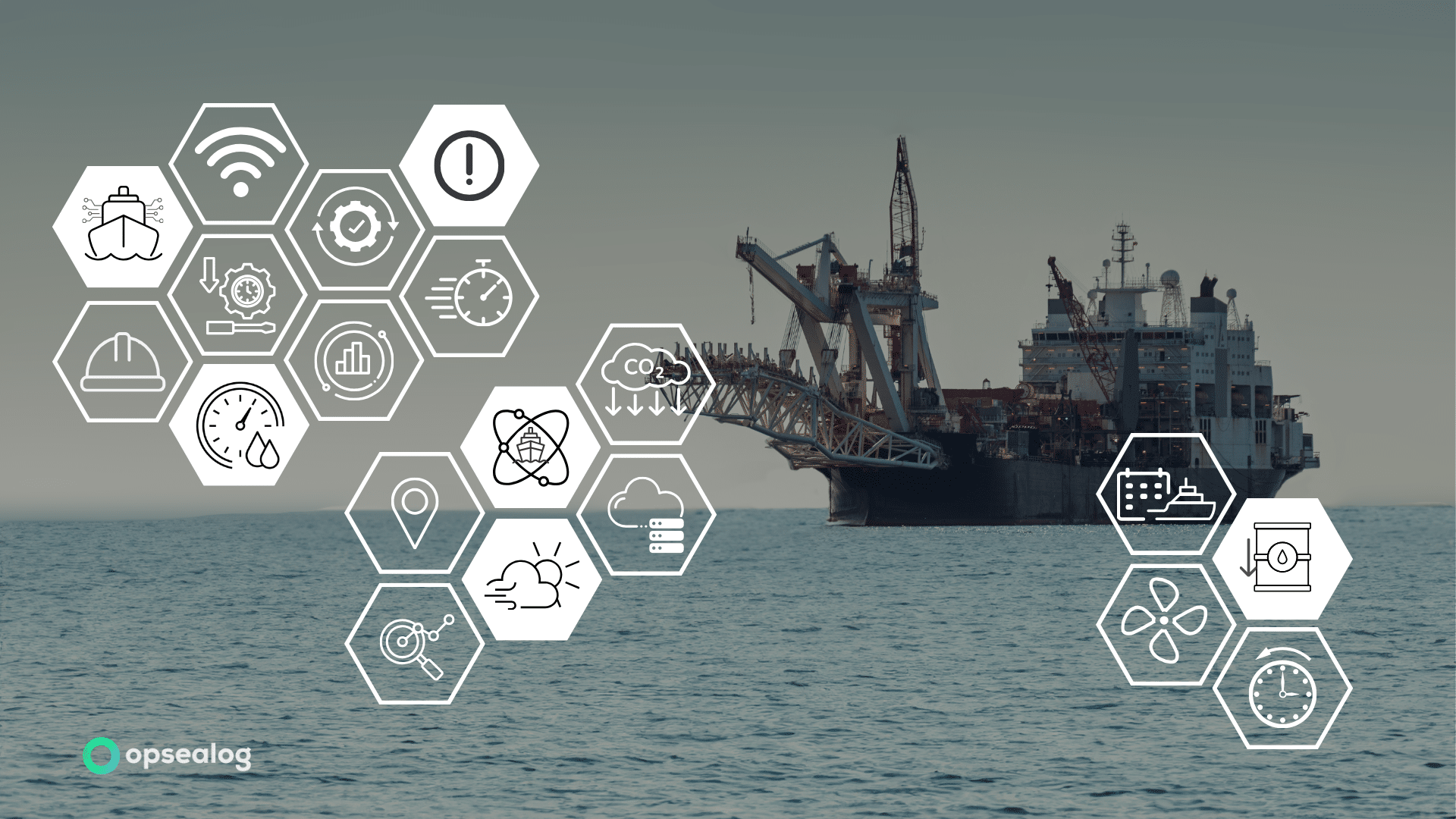From cargo ships to offshore support vessels (OSVs), the Maritime’s operational landscape is vast and complex. With vessels navigating infinite expanses, there is a growing need for efficient systems to collect, analyze, and report data accurately. Challenges include the need for real-time insights, compliance with environmental regulations, and the optimization of fuel efficiency to meet evolving industry standards and sustainability goals. Embark on an exploration into the complexities of monitoring and reporting practices in cable-laying vessels, where technology converges with the sea. In the realm of cable installation and maintenance across the ocean floor, cable-laying vessels (CLVs) assume a pivotal role.
Step into the forefront of cable-laying vessels’ technology, where technological advancements set them apart in the maritime industry. They are equipped with remotely operated vehicles (ROVs*), Dynamic positioning (DP), and Dynamic Tracking which pinpoint the exact location of the ship. These vessels are designed to lay underwater cables for telecommunications and are involved in numerous energy-related purposes, connecting offshore wind farms and oil and gas platforms to onshore facilities through the installation of power, data, and networking cables.
*Remotely operated vehicles (ROVs) are deployed to inspect and repair damaged cables, ensuring the reliability and longevity of the undersea infrastructure.
Challenges and Technologies in Cable-Laying Vessel Operations:
Cable-laying vessels operate in challenging marine environments. Since laying and repairing cables need to be done in a precise zone, an extended period of dynamic positioning is mandatory to achieve their tasks. Thus, robust, and adaptive solutions are essential to ensure accurate data collection. Let us delve into five key aspects that define the dynamic nature of cable-laying operations
Complex Cable Management:
Cable-laying vessels often carry a variety of cables, each serving different purposes such as communication, power transmission, or oil and gas exploration. Managing and monitoring multiple cable types and ensuring their integrity throughout the deployment process requires sophisticated data integration capabilities.
Real-time Communication Requirements:
Communication is paramount during cable-laying operations. Real-time data communication between the vessel and onshore operations is crucial to facilitate quick decision-making, address potential issues, and ensure the overall success of the cable-laying mission.
Navigational Precision:
Accurate navigation is critical for cable-laying vessels to avoid obstacles, and underwater hazards, and to follow predetermined cable routes. Monitoring systems must integrate with navigation equipment to provide comprehensive data that aids in safe and efficient operations.
Multi-tasking
Their working pattern can be overly complex since the vessels can be deployed for many different purposes during a single trip. Their primary task is the work they perform at sea, and such work therefore must be considered when a model for energy efficiency management is developed.
Data management and its intricate challenges:
These vessels are technologically advanced in terms of specific equipment with multiple onboard software applications, they can efficiently collect massive amounts of data to handle their different operations.
However, having multiple sources of data can complicate the overall data management process. The abundance of data streams generated by different applications onboard can lead to intricacies in handling and analyzing the information. The complexity arises from the need to integrate and synchronize data from various sources, ensuring accuracy and consistency in the analysis.
Additionally, the redundancy and unnecessary replication of data can pose challenges in terms of cost and resource management. Managing multiple data sources becomes a delicate task, requiring robust systems and processes to ensure that the data collected is accurate, reliable, and efficiently utilized for the vessel’s operations.
Beyond Data and Emissions: The Next Chapter for Cable-Laying Vessels
The upcoming challenge faced by cable-laying vessels is the fragmentation of data gathering across multiple software applications, each serving distinct functions. The absence of integration hampers overall vessel performance. Consolidating these disparate data sources into a standardized solution will facilitate efficient data collection but also streamline processes, enabling data selection, cleaning, and analysis, and, crucially, empowering marine experts with actionable insights. A comprehensive SaaS approach will enhance efficiency, making data-driven decision-making seamless and optimizing cable-laying operations in the maritime environment.
In response to these challenges, there is a widespread awareness and readiness to shift towards a more environmentally sustainable framework. Cable-laying vessels (CLVs) and companies involved in submarine cable installation are increasingly recognizing the importance of environmental responsibility and are ready to follow the upcoming regulations.
Data quality management and data analysis will play crucial roles in elaborating an environmental impact assessment during cable laying operations. Indeed, many measures should be considered, such as reducing underwater noise, disturbance, heat emissions, and electromagnetic fields, and protecting any kind of marine life. The integration of these environmental considerations into the comprehensive software not only ensures operational efficiency but also aligns with the growing commitment to environmental stewardship in the maritime industry.
Have a look at Green Marine, an environmental certification program that is gaining ground in the maritime industry in Europe.
Conclusion
As the maritime industry continues to evolve, the demand for reliable and efficient data analysis and integration solutions for cable-laying vessels becomes increasingly apparent. Our commitment as a SaaS provider extends to addressing the unique challenges posed by cable-laying operations, ensuring that these vessels can navigate the data seas with confidence and precision. By understanding the distinctive factors at play, our marine experts tailor solutions to empower cable-laying companies to streamline their operations, enhance decision-making, and improve efficiency when monitoring and reporting.
Explore Opsealog’s foundry to learn about our maritime experts and innovative solutions shaping the industry’s future.

